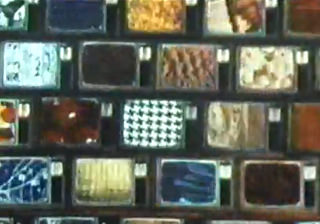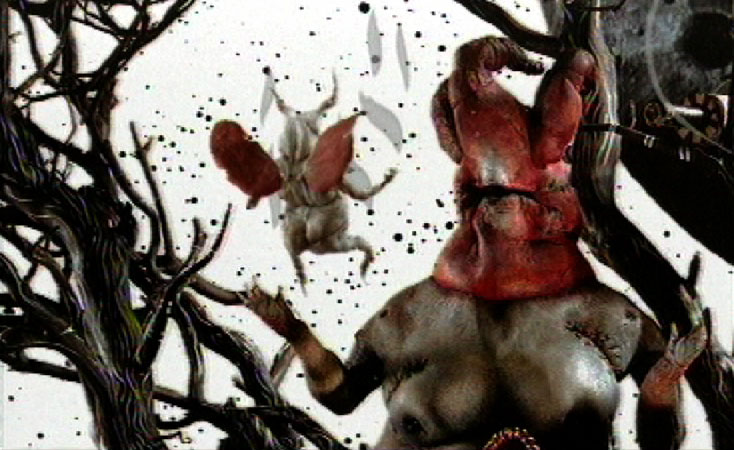Frank Film, Frank Mouris
This 1973 experimental animation uses
stop motion cut out magazine images. The sound track is layers of
Frank's voice over one another. It starts with one voice counting
down from 1972, while the other introduces the man, Frank, and the
film as a series of images which the film-maker had collected for
five years or so. Beginning with different shifting television
screens, the diverse images flash on the screen.
There is a relation between the
narrative of the man's childhood and the lists of seemingly unrelated
words, and the images. The word list is almost a stream of
consciousness word memory of items which come to mind when
remembering, with intuitive links to other words, and a tendence
towards illiteration and words starting with f where possible.
The counting voice moves through a
series of holy men and holy days, matching the images, as the
narrative voice mentions his calvinistic protestant work ethic of his
childhood. It continues with other things that start with f, such as
fried eggs, fish, fluffy, first-day-of-school (which coincides with
the other voice talking about school).
A list of all the women he remembers
runs behind his memories of girls as he talk of his school days.
He also creates a list starting with
free, such as free association, free loving, free from pain, free
from sin, free wheeling, free school, free state, free market,
free-while-this-offer-lasts.
He describes his process of getting to
the point where he wanted to be a film-maker.
The numbers return but going up this
time, as he says this is the end and the film finishes.
An interesting element of this
soundtrack is that there is no emotional tone set by a musical
introduction, you are left listening to the voices to decide your own
emotional response. I found myself in an analytical mode of
listening, shifting between listening to the more linear narrative
and the word lists, so I never heard the whole story of the
narrative. The sound quality was not so good, so I struggled to
understand the words, and wondered which I should be listening to at
any one moment. Yet the images, the story and the word lists built up
a picture of Frank's life which works on many layers, the visual
playful images, the intuitive free word association, and the
traditional story-telling, as you might hear a friend tell their
story. It is intimate without being over emotional, it feels very
personal and universal all at once. It feels like listening to your
brain work and being able to choose between the left brain or right
brain mental approaches and the visual also.


